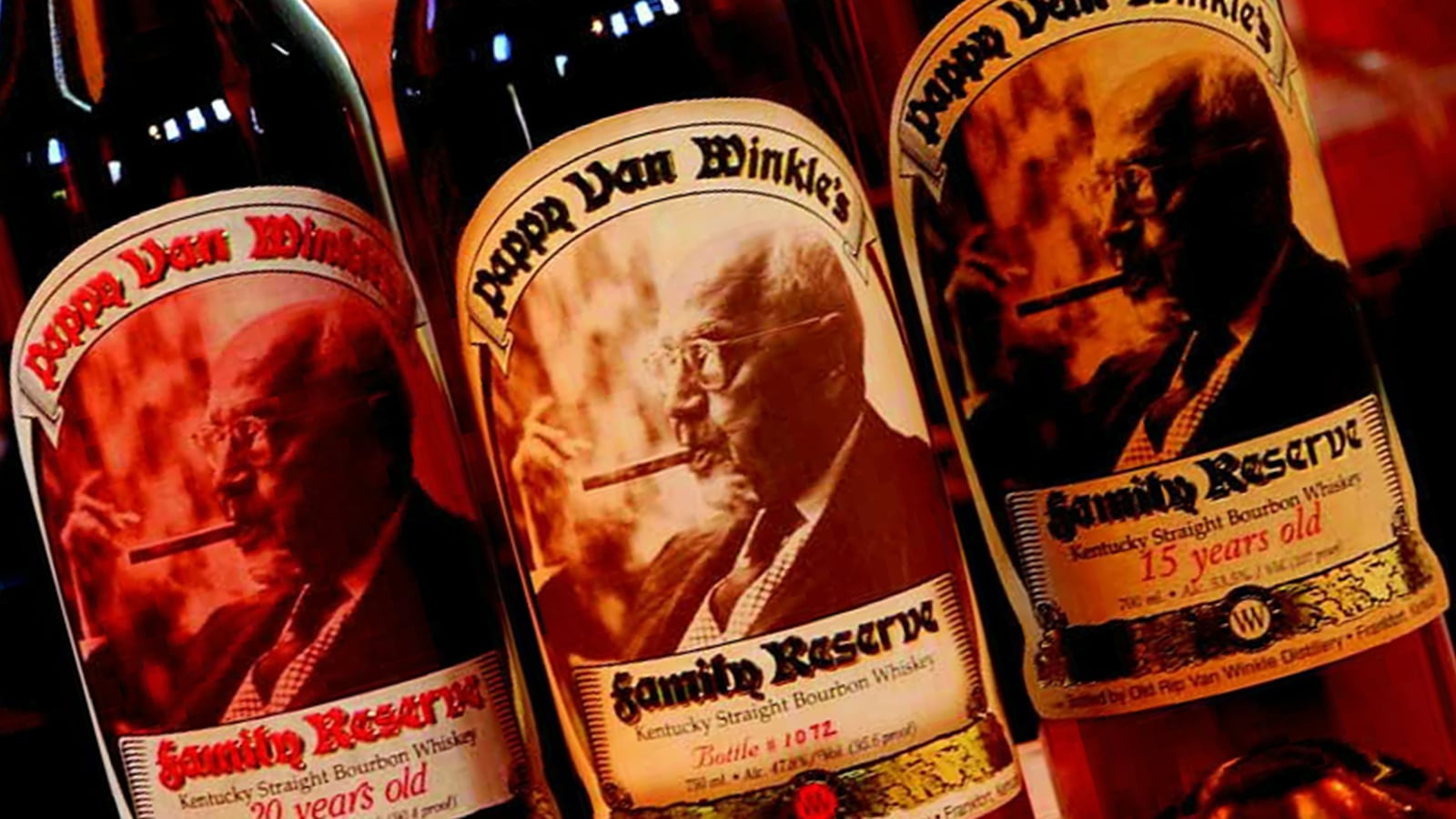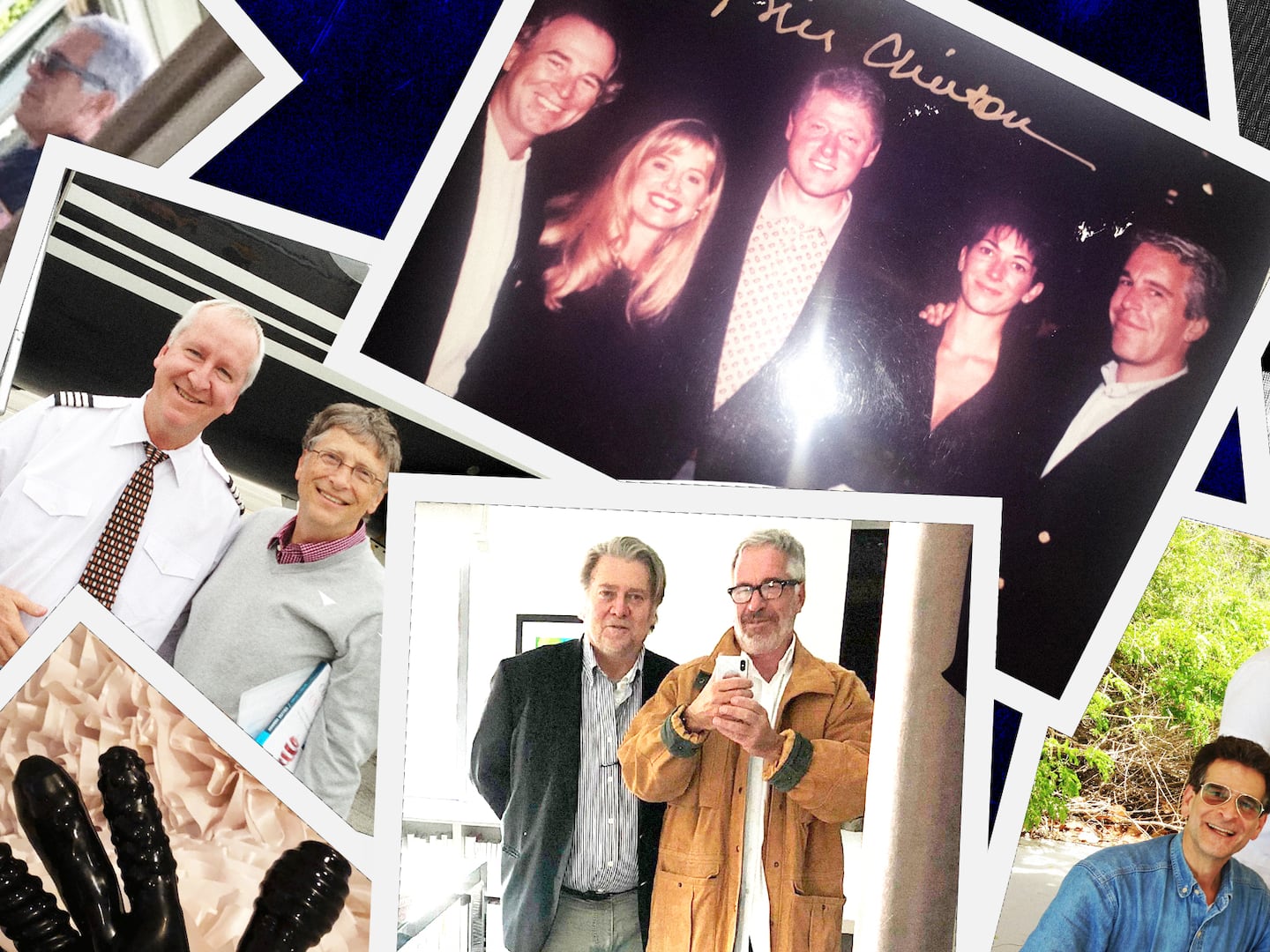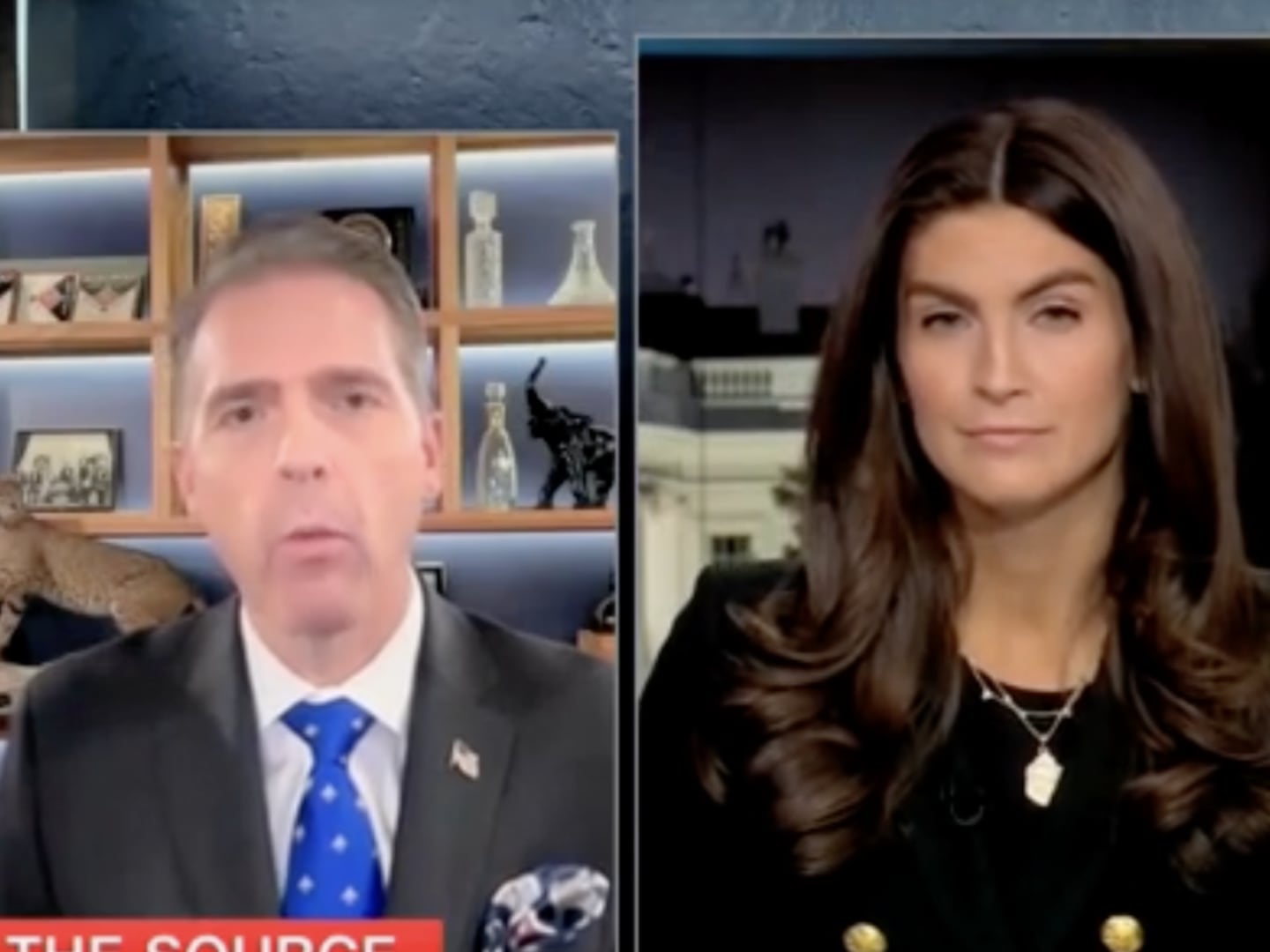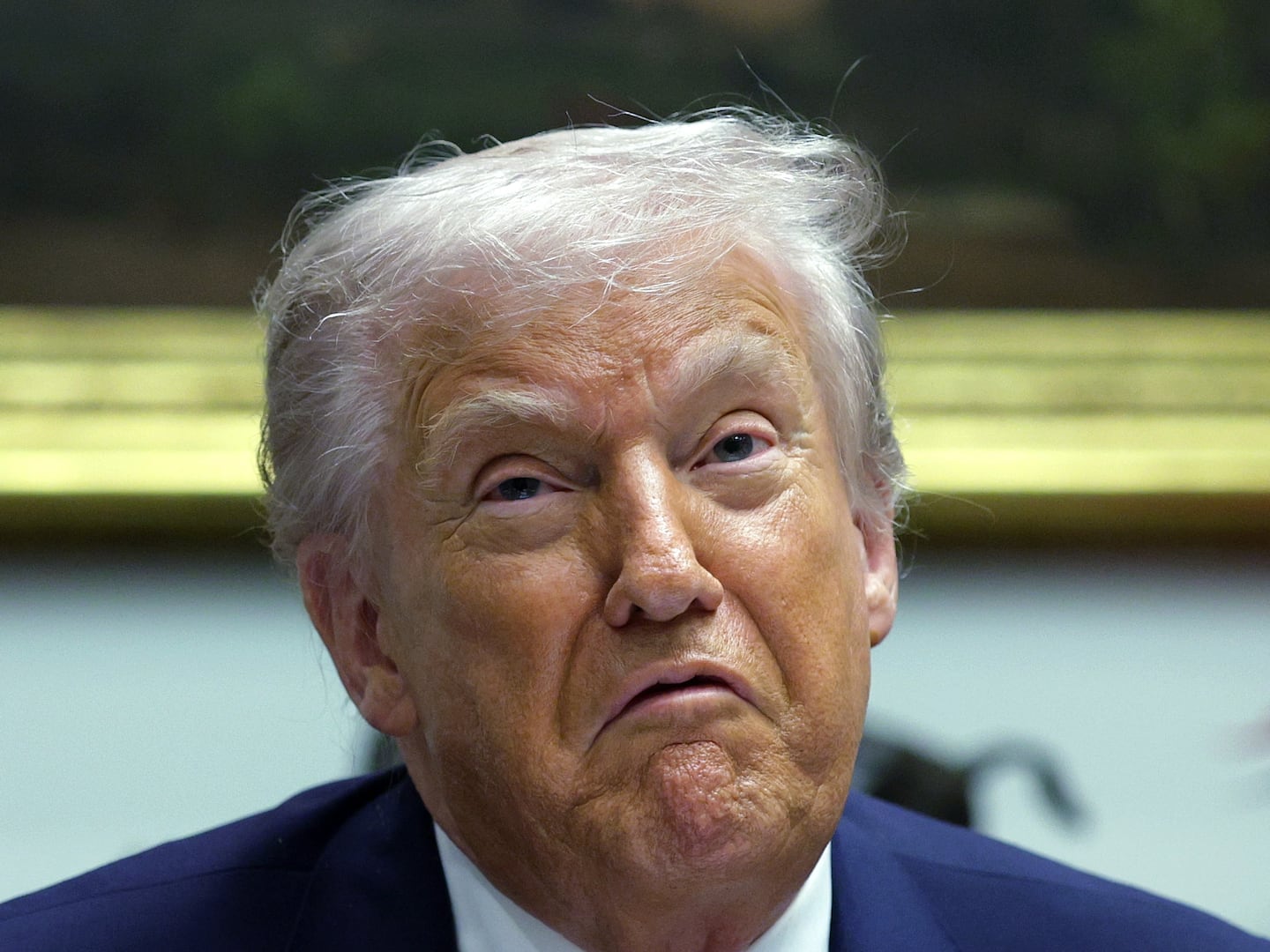So hot has been the market for Old Rip Van Winkle whiskies—especially the 20- and 23-year-old Pappy Van Winkle Family Reserve—that even the empties are going for more than many other bourbons. Go to eBay, and you’ll find not only empty bottles of Pappy up for auction, but also leftover velvet bottle-bags, shipping boxes, and neck-tags. Perhaps Pappy fans are so insatiable that they even want the detritus of their favorite tot. Or maybe something less savory is going on.
For years, Pappy was a relatively obscure whiskey that only those in the know were savvy to. Now the exact opposite holds true—Pappy has become so overexposed that it is championed and chased, not primarily by those in the know, but by many who hardly know bourbon at all.
Part of Pappy’s appeal—and one of the key reasons the whiskey has been able to garner such a following—is that it is wonderfully easy drinking, with a fruitcake blend of sweetness and spice. There’s a good deal of wheat in the “mash bill,” which gives the whiskey an approachable softness. However much balance, depth, and complexity Pappy may boast, it is also pleasant and welcoming to the drinker who hasn’t confronted much bourbon before. Many are the Pappy aficionados who are like a new jazz fan convinced that the greatest record ever made is “Charlie Parker with Strings.” There’s no denying it is a splendid disc, but let’s admit that it is rather easy listening.
The Van Winkle whiskies were originally from Kentucky’s Stitzel-Weller distillery, which the Van Winkle family sold in 1972 and which was ultimately shuttered in 1992. Credit is due to the Van Winkle progeny—Julian Proctor Van Winkle III and his son Julian Preston Van Winkle—for managing to midwife a drinkable bourbon of 20 years and more. Bourbon ages much more quickly than Scotch: new-make bourbon goes into fresh, charred oak barrels; Scotch goes into used barrels that don’t have as much flavor to impart. Scotch ages in a cold clime; Rickhouses in the American South tend to be toasty, which speeds the spirit’s interaction with the oak. The Van Winkles have done a fine job of avoiding the tarry taste that I’ve found in many American whiskies that spend too long in the wood. Credit is also due the Van Winkle company for their blending skills, maintaining a consistent flavor with their younger whiskies as they’ve moved from Stitzel-Weller stocks to include whiskey made for them at the Buffalo Trace Distillery.
But none of that explains the frenzy. Feel free to blame the journalists—I have to admit that I did my part, highly praising Van Winkle’s rye back in 2006. But it was much more recently that the publicity-damn burst. It was just a few years ago that high-end magazines and newspapers started including Pappy in their holiday gift guides. Celebrity chef Anthony Bourdain lent some of his celebrity to it, declaring Pappy, on the Travel Channel, to be “incredibly wonderful bourbon.” He coyly refused to name the whiskey’s name however, “because there are too many sons of bitches out there who want it.” He did, however, show the label, wink wink, nudge nudge. (The Van Winkles love to play this game too, always griping to reporters that they’re tired of all the demand.)
How did all the publicity get going in the first place? Much of the credit for the explosion in Pappy popularity is given to professional tasters at contests such as the San Francisco World Spirits Competition. Versions of Pappy won “Double Gold” medals in San Fran in 2005, 2007, and 2008 (when it was also named the year’s “Best Bourbon”). But such huzzahs have not been exactly consistent. In the 2009 San Francisco competition, Pappy scored—gasp!—a lowly Silver medal. That year, among the many Double Golds promiscuously handed out to various bourbons, one went to Old Grand Dad. So, it’s worth pointing out to Pappy’s many devotees who like to cite competition results that, depending on the year you choose to look at the scores, Pappy Van Winkle is either the untouchable nectar of the gods, or a bourbon that merely aspires to someday be as good as a $20 bottle of Old Grand Dad.
Key to the Pappy allure has been its scarcity. “I could put any bourbon in that bottle, and most people wouldn’t know the difference to save their life,” a liquor store owner tired of being pestered for Pappy told Louisville Magazine last year. “People want what they can’t have. It’s human nature.”
That’s one of the best explanations going for the extraordinary Van Winkle phenomenon. And it’s an angle that gets a boost from every news report about the lengths people will go to get their hands on Pappy, whether its the lines around the corner or the theft, a year ago, of cases of Van Winkle whiskey from the Buffalo Trace warehouse.
But there’s more going on than just scarcity. Pappy has become a prime example of a certain kind of product that economists called a “Veblen good.” Named for the sociologist of the “leisure class,” Thorstein Veblen, these are luxury items that defy the normal workings of the Law of Demand. Normally, when the price of a product climbs, the demand slips. With Veblen goods, the demand does the opposite, growing as the price goes up. In part this is because the person buying the Veblen good gets what economist Harvey Leibenstein called “conspicuous consumption utility.” And Pappyphiles have been nothing if not conspicuous.
But Veblen goods also function because price stands in as a measure of quality—if you can’t tell what the best whiskey is, but you very much want to be seen drinking the best whiskey, then you choose a very pricey spirit. The more expensive it becomes, the better it must be, which in turn makes it more desirable. But note the embarrassing logic of Veblen goods: they appeal to those unable to determine quality based on the evaluation of the product itself—it’s the stuff of those less than savvy folks who need price as a proxy.
Though, at their best, the Van Winkle whiskies are excellent, Pappy is not uniquely great. It lacks the fire that Blanton’s masters and controls; it doesn’t have George T. Stagg’s big shoulders; it isn’t as refined as the small batch versions of Four Roses. And now, even aside from the price, I find that the hype makes Pappy undesirable, a fine bourbon that, alas, now has the try-hard taint. The yearly release of Van Winkle whiskies—with overnight lines at liquor stores and stories of scuffles among the frenzied buyers—has become as tedious and contrived as the whole “Black Friday” hoo-ha. We can hope that it begins to fade, just as the air seems to finally be leaking out of Black Friday.
It’s also worth being on guard whenever there’s a robust market in what would otherwise appear to be useless or valueless goods, like the Pappy detritus found on eBay. In the last days of the Soviet Union, there was a going black market in burned-out light-bulbs. Why would anyone buy a dead bulb? New bulbs were so scarce that they couldn’t be bought, but one could always sneak a working bulb from the workplace. So that no one realized the working bulbs had been stolen, they were replaced with burned-out ones—thus the value of, and the market in, otherwise useless bulbs.
The trade in empty bottles should be as eyebrow-raising as the old Soviet dud-bulb biz. The last time empties brought so much money was at the peak of the craze for antique Scotch whisky: counterfeiters were buying up old, long-ago-drained bottles, filling them with random drams of recent make, and selling them to unwary collectors.
The Oxford Radiocarbon Accelerator Unit was put to work testing for radioactive carbon to put dates on the many rare and ancient drams miraculously appearing on the vintage whisky market in the aught years. “So far,” said the unit’s deputy director back in 2009, “there have probably been more fakes among the samples we’ve tested than real examples of old whisky.
Perhaps those buying up used Pappy bottles are just interested in impressing their friends by stationing distinguished dead-soldiers on the shelf. But is it paranoid to suspect that some of the many “unopened” bottles of Van Winkle on offer at Craigslist may not be the real McCoy?
The savvy forger with Pappy empties to fill might get his hands on some Old Weller and present it as its more illustrious cousin. Or, he might fill his empty Van Winkle bottles with a mix of Maker’s 46 and Old Fitzgerald “Larceny” doctored with a drop of coffee liqueur and a splash of Grand Marnier to simulate age. This might not fool a knowledgeable whiskey drinker, but how many of those desperate for Pappy are knowledgeable whiskey drinkers?
What with the limited number of bottles and the unlimited enthusiasm of the whiskey’s fans, authentic Pappy Van Winkle may be nearly impossible to find these days. But there is no shortage of great American whiskey on the market. And much of it, unlike Pappy, is right there on the shelf, humbly, quietly waiting to be tried.
You might even want to try Old Grand Dad.






